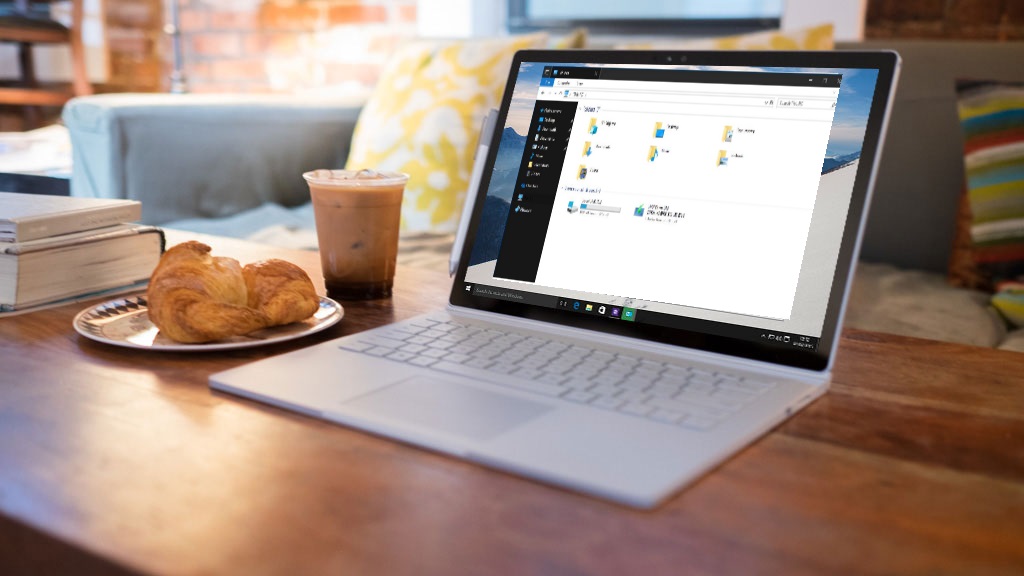Windows 10’s big 2020 updates could arrive sooner than expected thanks to Surface Neo
...And other Windows 10X dual-screen devices

Windows 10’s major biannual updates for 2020 will be quite different to this year’s releases, and the first one (20H1) could arrive much earlier than the traditional spring timeframe – possibly even in January 2020, so speculation runs.
And the second major feature update (20H2) of next year will see the finalization of Windows 10X – and could be out, theoretically, in the summer of 2020, if it falls in line with 20H1 of course (and that is indeed deployed early in the New Year).
- Windows 10X leak shows it’s not just for dual-screen devices after all
- We solve 100 common Windows 10 problems
- Check out our best laptops of 2019
This is according to Windows Central, which observes that Microsoft has now switched the development cycle of Windows 10 to match that of Azure, a ‘semester-based’ schedule which operates with target dates of December and June.
In other words, the RTM (Release to Manufacturing – essentially the finished version, albeit without last-minute polishing and bug fixes) version of Windows 10 will be done in December and June respectively.
So, if this rumor is correct, Windows 10 20H1 will hit RTM in December, and could therefore theoretically be rolled out to the public in January or February (much earlier than this year’s May 2019 Update, of course).
This makes sense in terms of why 19H2, the imminent November 2019 Update, is only a minor update with no new features introduced – simply so Microsoft could get it done quickly to allow the Windows 10 schedule to be realigned with Azure releases.
X marks the release date
This is doubly important because of the incoming Windows 10X devices which are expected to be shipping towards the end of 2020, as this allows 20H2 to be tailored for dual-screen hardware like Surface Neo, and worked on more to get the fresh spin on the OS right.
Get daily insight, inspiration and deals in your inbox
Sign up for breaking news, reviews, opinion, top tech deals, and more.
As opposed to rushing it for 20H1, which would have been the case if Microsoft had stuck with its current release cadence – because 20H2 deploying in October or November would have been too late.
Of course, while we could theoretically see January/February or July/August rollouts for the 20H1 and 20H2 updates respectively, there’s no guarantee this will happen. In fact, Windows Central specifically says that none of its inside sources are clear as to when the actual deployment will occur.
So while Microsoft may have a finished version of the respective updates come December or June, it may simply engage in a lengthened testing process that means the rollout doesn’t come until spring or autumn as normal – helping to further refine the end product and squash as many bugs as possible.
This has a precedent in that the current May 2019 Update was held for extra time in the testing process just to make sure an October 2018 Update-style calamity didn’t happen.
Which indeed it didn’t in terms of the actual initial rollout, but sadly the cumulative updates Microsoft has since issued for the May 2019 Update have been extremely problematic as we’ve seen (with bug fixes causing more bugs in a seemingly endless cycle).
As we’ve said before, perhaps it’s not just extra time in testing for big feature updates that Microsoft needs, but a rethink of its whole QA process when it comes to Windows 10 patches – lest the company’s reputation takes some serious damage which could be very bad news down the line.
Darren is a freelancer writing news and features for TechRadar (and occasionally T3) across a broad range of computing topics including CPUs, GPUs, various other hardware, VPNs, antivirus and more. He has written about tech for the best part of three decades, and writes books in his spare time (his debut novel - 'I Know What You Did Last Supper' - was published by Hachette UK in 2013).